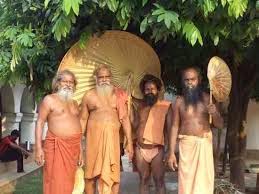Dhenkanal: Lakhs of followers of Mahima Dharma congregated at the samadhi peetha of Mahima Gosain, the founder of Mahima cult, at Joranda in Dhenkanal district of Odisha Friday to participate in the 147th Magha Mela also called Joranda Mela.
Mahima saints at Joranda, religious headquarters of ‘Mahima Dharma’, had been preparing for over a month for the three-day fair which aims at spreading messages of love and humanity in the name of Mahima Gosain.
The district administration has made necessary arrangements for the annual fair expecting a footfall of over 10 lakh devotees from various parts of the world. Eight platoons of armed police force along with one ASP, four DSPs, 49 SIs and ASIs, 10 Havildars, six traffic police personnel and 132 Home Guards have been deployed at the festival to maintain law and order situation.
It is worthwhile to mention that the Joranda Mela is observed to mark the day of salvation of Mahima Gosain in Sunya Mandir at Joranda in 1876. It is celebrated on a full moon day in the month of Magha (between January and February) and continues for three days. Joranda Mela is organised by the Mahanitya Sadhubhakta Mandali (Kaupanidhari society), the Satya Mahima Dharma Dhama Parichalana Samiti (Bakaldhari) and the Dhenkanal administration.
The followers of Mahima cult, saints, lead a life of poverty, celibacy, piety and constant movement. Like Buddhist monks, they don’t constitute a priestly class and don’t exercise control over lay devotees. They don’t worship any idol; instead, the supreme lord of the indescribable grace (Alekha) is worshipped.
They are forbidden to adultery and violence, and consumption of any intoxicants and meat. They leave their beds at 4 am and perform saran/darshan before sunrise. It is an act of complete surrender of self to Mahima Prabhu. This is repeated 3 times a day including noon and evening before sunset.
Mahima saints wander everyday because they are not allowed to sleep in the same place on two consecutive nights, nor take meal twice from same house any day. They are a tiny community of monks, wearing only a small saffron coloured cloth to cover their loins and knotting their hairs.
Thousands of sadhus, sanyasins and devotees of both the sects such as Kaupinidahri (wearing loin clothes) and the Bakaldhari (wearing the bark of tree) reach Joranda on the auspicious occasion of Magha Mela to offer their prayers for world peace.
The devotees pour tonnes of pure ghee on the sacred fire chanting “Brahma Alekh” or “Mahima Alekh”. Joranda Mela reflects the ideals of Mahima Gosain who envisioned a classless society free from exploitation of the weak and poor by the feudal ruling chiefs and the landed gentry. His efforts also aimed at opposing the idea of large-scale conversion of Hindus to Christianity during the British rule in India.
Mahima Gosain ignited ‘Akhanda dhuni’ (uninterrupted fire) on Magha Purnami for the welfare of the universe and since then the ‘Akhanda dhuni’ is burning without any interruption. After the death of Mahima Gosain in 1876, his disciples endowed the Mahima Gadi Mandir, the open temple (the temple with a void at the top), on his graveyard with the symbol of a serpent on the top.
It is also called the ‘Shunya Mandir’ (temple of void) as no idols are worshipped. Meanwhile, the devotees have erected Ekoisihatia Mandir, Ghanta Mandir and Dhuni Mandir in the holy shrine. The atmosphere at the Joranda Mela reverbs with the sound of ‘Alekh Brahma’ by devotees in rhythmic tone staunchly believing that these devotion will refine our earth and will provide the people with all their basic needs that are required in their daily lives.

